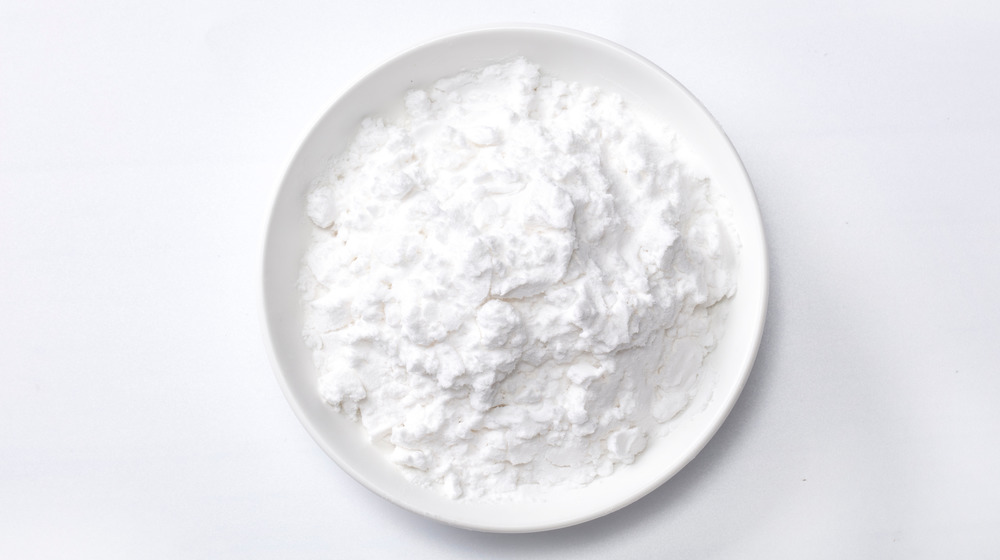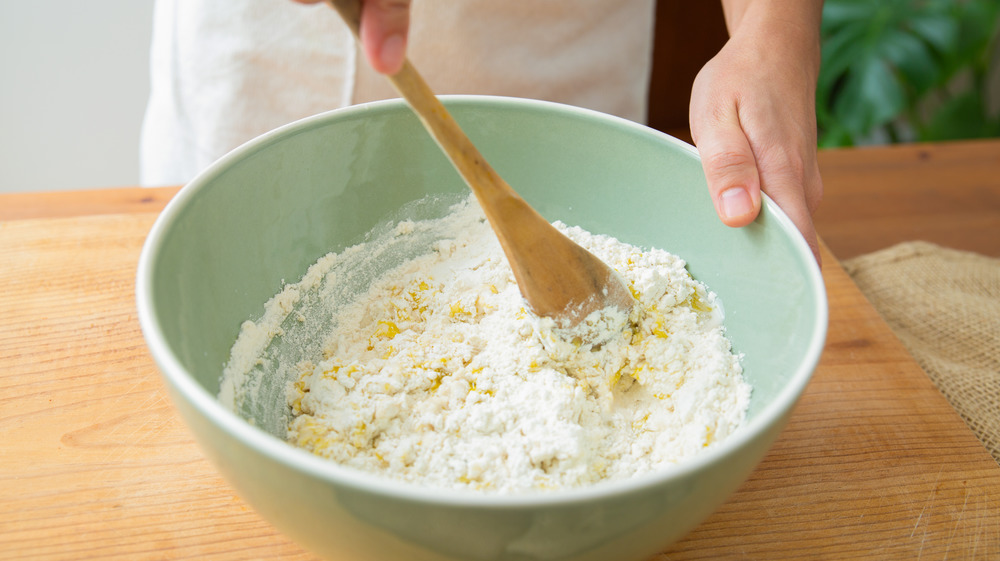Here's What You Can Substitute For Gluten-Free Flour
According to the University of Maryland Center for Celiac Research, around 20 million people in the U.S. population have some form of gluten intolerance, ranging from gluten sensitivity to full-blown celiac disease (via Verywell Health). While those people have to follow a gluten-free diet because of autoimmune issues, many others choose to follow the trendy diet in hopes of improving their own health in some way. In fact, Forbes reports that 72 percent of people who eat gluten-free don't have any type of intolerance.
Regardless of why you're eating gluten-free, if you're someone who has cut the ingredient out of your diet, that doesn't mean you can't still enjoy your favorite baked goods, like donuts and bread. And even better, you don't have to spend extra on special gluten-free flour to make them. Here's what you can easily substitute for gluten-free flour if you can't find it at the store or don't want to shell out extra bucks for it.
You'll need rice flour and tapioca flour
To make gluten-free flour like you'd find at the store at home, all you need to do is combine two types of naturally gluten-free flours. The Kitchn recommends whisking together one pound of white rice flour and one cup of tapioca flour. According to the culinary site, this alternative works best in baking recipes that call for two cups or less of flour, and that you can substitute it for regular flour in a one-to-one ratio (i.e. one cup of gluten-free flour for one cup of regular all-purpose flour).
The blogger behind Gluten-Free Palate uses a similar blend of flours for her own baking needs, but occasionally adds in xanthan gum. While she notes that this ingredient is totally optional, she explains that xanthan gum adds more moisture to gluten-free baked goods and can prevent them from being too crumbly. She suggests using one teaspoon of xanthan gum per cup of flour.

